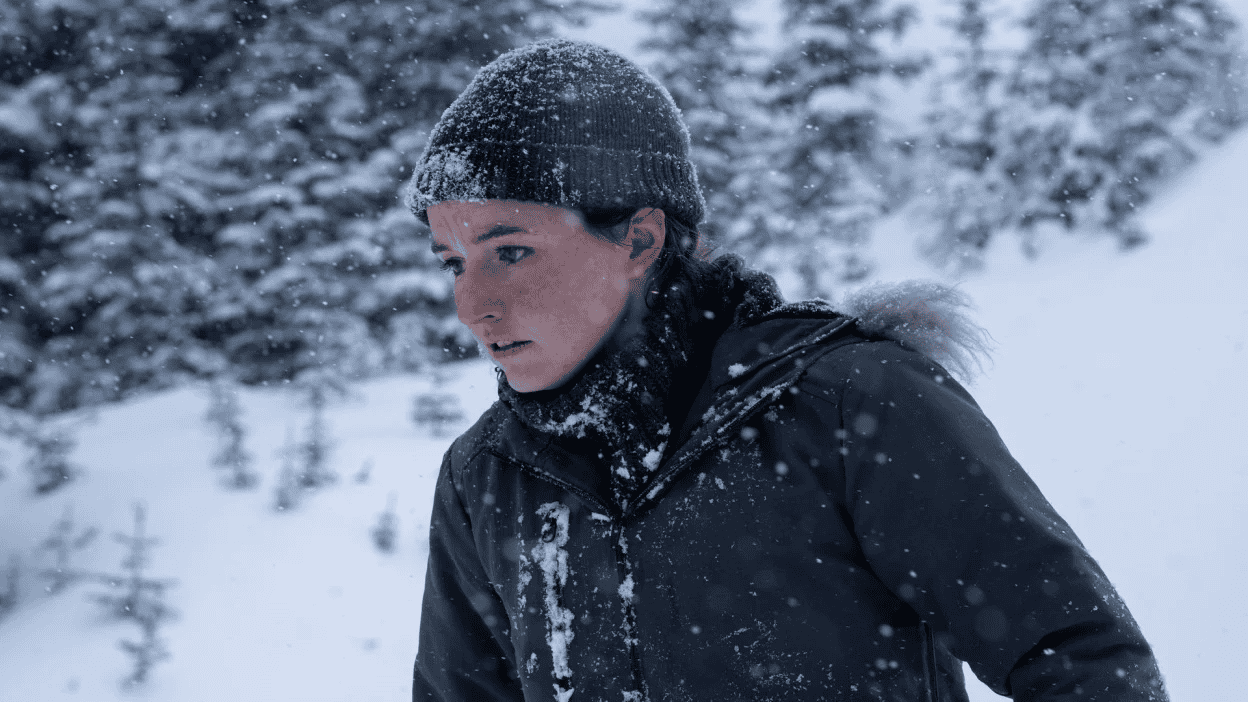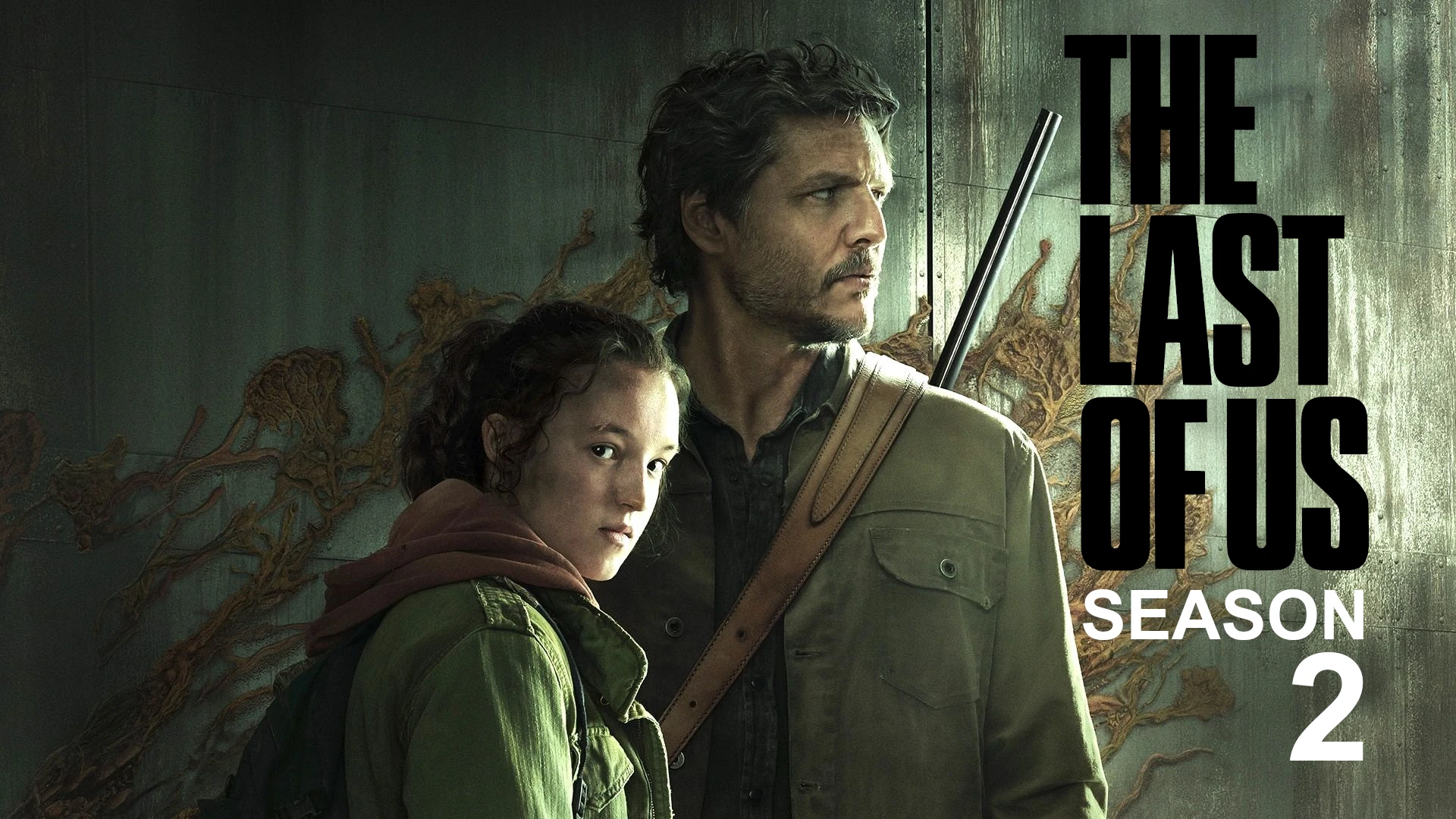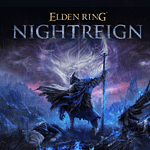The Last of Us Season 2 has officially crossed the line from dramatic to devastating—and fans are still processing what just happened in Episode 2. Titled “Through the Valley,” the episode marks the brutal and highly controversial death of Joel Miller (Pedro Pascal), a key figure since the beginning of the franchise.
For longtime fans of the video game, the moment was expected. For others, it felt like a gut punch—and HBO didn’t hold back. But beyond the grief and shock, this episode also sets the stage for one of the most emotionally intense revenge arcs television has seen in years.
Joel’s Death: Faithful, Harrowing, and Divisive
The death scene follows the narrative laid out in The Last of Us Part II, where Joel is killed by Abby (portrayed in the series by Kaitlyn Dever). What’s notable is how the series handled the moment: director Mark Mylod, known for his work on Succession, leaned into subtlety and trauma instead of shock value. The violence is present, but it’s the aftermath—the raw reactions, the silence, and Ellie’s scream—that punches the hardest.

Pedro Pascal reportedly found filming the sequence “emotionally blinding,” even saying in interviews that he entered “active denial” once he read the script. The entire sequence was shot on location in Canada under harsh weather conditions, adding to the emotional and physical toll on the actors.
Episode 3 Teaser: Ellie’s Rage Awakens
The trailer for Episode 3 wastes no time in showing the emotional fallout. Ellie (Bella Ramsey) is seen retreating into anger and obsession as she begins to unravel the mystery behind Abby’s identity. One of the trailer’s standout moments is her quiet conversation with Dina (Isabela Merced), in which she asks, “Who is the girl with the braid?” Fans of the game know what’s coming next.
This marks the beginning of Ellie’s transformation from survivor to executioner—one of the game’s most controversial yet powerful arcs. The series is expected to explore this evolution slowly and painfully, with new layers of guilt, grief, and moral ambiguity.
Inside the Cast’s Emotional Journey
Pedro Pascal has spoken at length about how difficult it was to say goodbye to Joel. He admitted in Entertainment Weekly that the bond with cast and crew made filming his final episode especially painful:
“It was surreal, filming something so personal. I had to remind myself over and over—it’s not real.”
Bella Ramsey, meanwhile, revealed that the cold weather, long hours, and emotional weight of the scenes often “amplified [their] autistic traits.” In an interview with People, they described the experience as “atrocious but empowering,” noting how it helped them understand themselves on a deeper level.
Isabela Merced, who plays Dina, offered a more therapeutic take, saying each episode feels like “a personal therapy session,” highlighting the emotional realism the show continues to deliver.
Pop Culture Survives the Apocalypse
One surprising moment from the season premiere gained viral attention: Ellie finding a nearly pristine 2003 issue of People Magazine with Jennifer Aniston on the cover. The internet had a field day, and even Aniston joined in on Instagram, joking:
“Of all things to survive the apocalypse…”
It’s a small but perfect example of how The Last of Us balances emotional weight with real-world texture.
Future of the Games: Is Part III Happening?
While Season 2 closely follows The Last of Us Part II, fans are already speculating about a possible Part III. Co-creator Neil Druckmann recently cast doubt on that happening any time soon.
“Don’t bet on there being more of The Last of Us. This could be it,” he said in a Polygon interview.
That statement has sparked heated discussion in the gaming community. Some believe Naughty Dog is ready to move on, while others are hopeful the studio is just being secretive as usual.
Season 3 Confirmed — But What Will It Cover?
Despite the game’s uncertain future, HBO isn’t slowing down. Season 3 of the TV series is already in development, with Craig Mazin promising that the next chapter will explore “new dimensions” of the world and its characters.
Rumors suggest the show might begin expanding beyond the game’s storyline, possibly incorporating elements from unused scripts or side narratives originally cut from Part II. If true, this could allow HBO to shape The Last of Us into a long-running drama that transcends its video game origins—much like Game of Thrones did in its early years.
Overview of ‘The Last of Us’ Series
“The Last of Us” has become one of HBO’s most acclaimed shows, transforming a beloved video game into a compelling television drama. The series stays faithful to its source material while expanding certain character stories and emotional arcs.
Adaptation from Video Game to HBO Series
“The Last of Us” HBO series, developed by Craig Mazin and Neil Druckmann, premiered in 2023 as an adaptation of Naughty Dog’s popular video game. The show stars Pedro Pascal as Joel and Bella Ramsey as Ellie, creating a post-apocalyptic world where a fungal infection has devastated civilization.
The adaptation brilliantly expands on storylines only briefly touched upon in the game. A prime example is Bill and Frank’s relationship, which received an entire episode in the series but was only minimally explored in the game.
The creative team made strategic choices about which elements to preserve and which to enhance. Their commitment to emotional storytelling while maintaining the core narrative has been praised by both gamers and new audiences.
Critical Reception and Success
The HBO series received widespread acclaim from critics and viewers alike. The show’s first season earned multiple Emmy nominations and wins, particularly for performances and writing.
Viewership numbers broke records for HBO, making it one of the network’s most successful new series. Critics particularly praised the chemistry between Pascal and Ramsey, along with the emotional depth given to supporting characters.
The Bill and Frank episode, “Long, Long Time,” became a standout moment in television. Nick Offerman and Murray Bartlett’s performances resonated deeply with audiences and demonstrated the series’ ability to expand thoughtfully on the game’s foundation.
Industry analysts note that the show succeeded where many video game adaptations fail by prioritizing character development and emotional authenticity over action sequences.
Character Deep Dive: Bill and Frank
Bill and Frank’s relationship became one of the most memorable aspects of HBO’s “The Last of Us” adaptation. Their story expanded significantly from the game, showcasing a complete romantic journey that resonated with viewers.
Bill’s Character Analysis
In the HBO series, Bill is portrayed as a survivalist who thrived when civilization collapsed. His paranoia and preparation paid off, allowing him to create a safe haven in his small town. Bill’s character arc reveals how his rigid worldview softens through his relationship with Frank.
The show gives Bill more depth than his game counterpart. While maintaining his survivalist expertise, the series explores his emotional journey from isolation to connection. The episode “Long, Long Time” shows how Bill’s skills aren’t just about survival but about protecting what he loves.
Bill’s transformation from a lone wolf to a devoted partner highlights how human connection remains vital even in apocalyptic settings. His character demonstrates that survival isn’t meaningful without something to live for.
Frank’s Character Development
Frank receives significantly expanded character development in the HBO adaptation compared to the video game. In the game, Frank appears only briefly as a corpse, but the series brings him to life as a fully realized character with hopes, talents, and desires.
Frank’s artistic sensibilities and appreciation for beauty create a perfect counterbalance to Bill’s pragmatism. He introduces warmth, culture, and social connection to Bill’s isolated existence. Their relationship spans decades, allowing viewers to witness Frank’s impact on transforming their shelter into a real home.
The series portrays Frank’s decline due to illness with dignity and agency. His decision to end his life on his terms, sharing a final day with Bill, represents one of the show’s most poignant moments. Frank’s character embodies resilience and finding joy despite the horrors of their world.
Representation in the Post-Apocalyptic Narrative
“The Last of Us” breaks new ground in apocalyptic storytelling through Bill and Frank’s relationship. Their story defies the genre’s typically bleak outcomes by showing a couple who find fulfillment and live a complete life together despite the world’s collapse.
The portrayal of their queer relationship avoids common media tropes. Instead of tragedy defined by their sexuality, Bill and Frank’s story centers on universal themes of love and companionship. Their relationship isn’t sensationalized but presented naturally as part of human experience.
This representation matters particularly in post-apocalyptic settings, which rarely show LGBTQ+ characters thriving. The series demonstrates that even when civilization falls, diverse expressions of love and family persist. Bill and Frank’s story has been praised for how it expanded on game elements while creating something meaningful that resonates beyond gaming audiences.
Cast and Character Insights
The HBO adaptation of The Last of Us brought compelling performances that expanded on characters from the video game. The show’s creators took particular care with Bill and Frank’s storyline, transforming a brief mention into one of the most celebrated episodes of the series.
Nick Offerman as Bill
Nick Offerman’s portrayal of Bill earned widespread acclaim from critics and audiences alike. Unlike the game where Bill appeared as a paranoid survivalist, the HBO series developed him into a complex character with a rich emotional life.
Offerman brought depth to Bill’s character, showing his transformation from a suspicious loner to a loving partner. The role was a departure from his comedic work on shows like “Parks and Recreation.”
The creators, Craig Mazin and Neil Druckmann, specifically expanded Bill’s character to explore themes of love and connection in the post-apocalyptic world. This decision proved successful, with many considering Episode 3, “Long Long Time,” a standout of the first season.
Murray Bartlett as Frank
Murray Bartlett stepped into the role of Frank, a character who had minimal presence in the original game. In the video game, Frank was only mentioned as Bill’s former partner who became infected and died by suicide.
The HBO series transformed Frank into a fully realized character whose relationship with Bill spans years. Bartlett’s performance captured Frank’s optimism and determination to create beauty even in a devastated world.
His chemistry with Offerman created one of television’s most touching love stories. The episode chronicled their relationship from first meeting through their final days together, showing how they built a life of meaning despite the horrors outside their walls.
Supporting Cast and New Characters
Following the success of Bill and Frank’s expanded storyline, Season 2 plans to give similar treatment to minor game characters. This approach mirrors how the creators fleshed out characters like Kathleen (played by Melanie Lynskey), who doesn’t appear in the games at all.
Recent casting announcements for Season 2 include six new actors joining the series. Among them is a former “Sopranos” star who will play a minor game character confirmed for an expanded role similar to Bill and Frank’s treatment in Season 1.
The creative team continues to use the television format to deepen the game’s world and characters. This strategy allows them to preserve the core story while adding emotional resonance through character development that wasn’t possible within the game’s format.
Behind the Scenes
The creation of Bill and Frank’s story in “The Last of Us” involved careful attention to production details. From filming locations to musical choices, the team worked to bring emotional depth to this relationship.
Filming Locations and Set Design
The production team transformed real locations to create Bill and Frank’s neighborhood in Lincoln, Massachusetts. They built Bill’s fortified home with intricate details showing his survivalist mentality while allowing space for Frank’s artistic influence to gradually appear.
The contrast between the harsh outside world and their cozy home interior was deliberately designed to emphasize their sanctuary. Set designers included subtle visual storytelling elements that showed the evolution of their relationship over time.
Notably, the production hired an intimacy coordinator for certain scenes, though it hasn’t been confirmed specifically which episodes they worked on. This professional helped ensure the actors felt comfortable during the more personal moments between Bill and Frank.
Music and Soundtrack Contributions
Linda Ronstadt’s “Long Long Time” became the emotional centerpiece of Bill and Frank’s story. The song was carefully selected to represent their relationship’s enduring quality and to serve as a musical motif throughout their episode.
The song’s melancholic yet beautiful tone perfectly captured the bittersweet nature of finding love in a post-apocalyptic world. After the episode aired, “Long Long Time” experienced a significant streaming increase as viewers connected with its emotional impact.
Beyond this signature song, composers created subtle musical themes that evolved as Bill and Frank’s relationship developed. The soundtrack used piano pieces to reflect Frank’s artistic influence on their home and Bill’s gradually softening personality.
The music department worked closely with the directors to ensure each musical choice enhanced the storytelling without overwhelming the intimate moments between the characters.
Narrative Themes and Context
The story of Bill and Frank in HBO’s “The Last of Us” explores profound themes of love, survival, and human connection. Their relationship serves as a pivotal emotional anchor within the show’s harsh post-apocalyptic world.
Exploring Post-Apocalyptic Survivalism
Bill’s character embodies the quintessential survivalist in a world ravaged by the cordyceps infection. As a paranoid prepper, he transformed his neighborhood into a fortified safe haven after the government evacuated his town. His elaborate security systems, traps, and self-sufficient lifestyle represent a common post-apocalyptic trope.
Unlike the game’s portrayal, the HBO adaptation delves deeper into Bill’s psychology. His initial isolation stems from distrust of authority and others, showcasing how trauma shapes survival strategies.
The series explores an important question through Bill’s journey: Is mere survival enough? His character arc suggests that survival without connection lacks purpose—a theme that resonates with Joel’s own journey throughout the series.
Romantic Subplots in the Apocalypse
The relationship between Bill and Frank in Episode 3 stands as one of the most significant departures from the original game’s narrative. Their love story spans nearly two decades, beginning with Frank stumbling into one of Bill’s traps.
Their romance develops against the backdrop of civilization’s collapse, offering a counterpoint to the brutality that dominates this world. Their shared meals, music, and gardening illustrate how beauty can persist even in devastation.
This subplot demonstrates that meaningful connections aren’t luxuries but necessities for true survival. Frank’s influence softens Bill’s rigid survivalist mindset, showing how relationships can transform even the most hardened hearts.
Their story concludes with a bittersweet joint suicide after Frank develops a terminal illness—choosing to end their story on their own terms.
LGBTQ Representation: Significance and Response
The expanded storyline of Bill and Frank represents one of television’s most poignant portrayals of an LGBTQ relationship in recent years. Unlike the game’s implied relationship, the show presents their love story front and center.
Casting Nick Offerman and Murray Bartlett brought depth and authenticity to these characters. Their performances received widespread critical acclaim for avoiding stereotypes while delivering emotional resonance.
The episode sparked significant positive response from viewers who appreciated seeing queer love portrayed with such complexity and dignity in a mainstream series. Many critics noted how the storyline transcended typical LGBTQ representation by simply presenting their relationship as fundamentally human.
This representation matters particularly in the post-apocalyptic genre, which has historically focused on heteronormative relationships. Bill and Frank’s story demonstrates that diverse love stories deserve equal space in all narrative contexts.
Fan Reactions and Community Engagement
Bill and Frank’s story in HBO’s “The Last of Us” sparked significant viewer reactions across various platforms. Their relationship became a major talking point among fans, with some expressing deep emotional connections to the characters while others had mixed feelings about how their story was portrayed.
Fan Theories and Discussions
Many viewers were deeply moved by Bill and Frank’s relationship in Episode 3. Some fans expressed disappointment with the deviation from the original game storyline, questioning why the show took a different direction. Others defended the change, appreciating the depth it added to the characters.
Online forums buzzed with debates about the episode being “boring” versus those who found it emotionally powerful. The bittersweet ending where Bill chooses to end his life alongside Frank sparked particularly intense discussions about love and sacrifice.
Game fans compared the HBO version of Bill to his video game counterpart, with some arguing the show’s version was a “downgrade” from the game’s more complex character.
Community Impact and Social Media Buzz
Social media platforms exploded with reactions after the episode aired on HBO and Sky. Many viewers shared emotional responses, artwork, and memes celebrating Bill and Frank’s relationship. Hashtags related to the episode trended for days after it aired.
The story of these two characters resonated beyond the gaming community, bringing in new viewers who connected with their love story. Some fans created tribute videos and fan fiction expanding on Bill and Frank’s backstory.
The episode’s impact extended to discussions about LGBTQ+ representation in mainstream television. Many praised HBO for giving screen time to a loving relationship between older gay men, calling it groundbreaking for a show based on a zombie apocalypse video game.
Future Prospects
The Last of Us Season 2 is shaping up to expand character development beyond the main protagonists, similar to how Season 1 enhanced Bill and Frank’s story. Several exciting developments are on the horizon for both new and returning characters.
Potential Storylines for Season 2
Season 2 will likely draw heavily from The Last of Us Part II game, but with significant expansions to certain characters. The production team has confirmed plans to flesh out a minor character from the games using the same approach they took with Bill and Frank’s storyline in Season 1. This character development strategy proved successful, turning Bill and Frank’s brief game appearance into one of the most emotionally resonant episodes.
Tommy’s role may be expanded in the upcoming season, providing more backstory and depth. The show will also introduce Abby, a crucial character from Part II, whose storyline intertwines with Joel and Ellie’s journey in complex ways.
The creative team behind “Chernobyl” continues to demonstrate their ability to adapt game material while enhancing emotional storytelling.
Upcoming Cast Announcements and Teasers
HBO has been carefully releasing information about Season 2’s casting choices. Recent news suggests that similar to how Nick Offerman and Murray Bartlett brought Bill and Frank to life, the production is seeking established actors for new characters.
Several teaser images have been released showing production design that hints at locations from Part II. These glimpses suggest the show will maintain its faithful yet creatively expanded approach to the source material.
Fan speculation is growing about who might portray Abby, with several prominent actresses reportedly testing for the role. The casting announcement is expected within the next few months.
Production updates indicate filming is progressing well, with several key scenes already completed.
Frequently Asked Questions
The Bill and Frank storyline in HBO’s The Last of Us has generated significant discussion among fans and critics. Their relationship represents one of the most notable adaptations from the original video game source material.
What is the significance of Bill and Frank’s storyline in The Last of Us series?
Bill and Frank’s story provides a rare glimpse of love and tenderness in the post-apocalyptic world. Their relationship demonstrates that meaningful connections can still exist despite the harsh reality of the cordyceps infection.
The episode featuring their story has been described as one of the most emotional of the series. It serves as a counterpoint to the violence and survival-focused narrative that dominates much of the show.
Their storyline also explores themes of sacrifice, commitment, and finding purpose in a broken world.
How does the depiction of Bill and Frank in The Last of Us series differ from the video game?
In the video game, Frank’s character is only mentioned but never seen alive. Players discover that Frank abandoned Bill after their relationship deteriorated.
The HBO series significantly expanded their story, showing their complete relationship from first meeting to final moments together. This represents one of the most substantial changes from the original source material.
In the game, Frank dies by suicide after becoming infected, leaving a bitter note for Bill. The series transformed this into a mutual decision to end their lives together after years of happiness.
What has been the audience reaction to the Bill and Frank episode in The Last of Us?
The episode featuring Bill and Frank has received widespread critical acclaim. Many viewers consider it one of the standout episodes of the entire series.
Some fans of the original game initially expressed surprise at the major changes to Bill’s storyline. However, most came to appreciate the deeper emotional resonance created by the expanded relationship.
The episode has been praised for its sensitive portrayal of a long-term LGBTQ+ relationship in a post-apocalyptic setting.
What are the implications of Bill and Frank’s relationship for the broader narrative of The Last of Us?
Their relationship establishes that meaningful connections remain possible even in the most desperate circumstances. This theme echoes throughout the larger story between Joel and Ellie.
Bill and Frank’s self-contained life demonstrates an alternative approach to survival compared to government quarantine zones or hunter communities. Their ability to create a comfortable existence influences Joel’s perspective.
Their story also shows the psychological impact of the apocalypse on different personality types, with Bill’s paranoia contrasting with Frank’s desire for beauty and community.
How did the show creators approach the development of Bill and Frank’s characters in The Last of Us?
According to the show creators, they wanted to expand on what was merely hinted at in the game. Craig Mazin has stated that he suggested to Neil Druckmann a more complete exploration of Bill and Frank’s relationship.
The writers deliberately crafted a love story that spanned decades to create emotional impact. They focused on showing the complete arc of a relationship from beginning to end.
The production team put significant effort into the visual details of Bill and Frank’s home environment. These details help illustrate how their relationship evolved over time.
In what ways has The Last of Us series expanded upon Bill and Frank’s backstory compared to the original game?
The series provides a detailed account of their first meeting, with Frank stumbling into one of Bill’s traps. This entire sequence is original to the show.
Unlike the game, the series depicts their full relationship history, including their conflicts, reconciliations, and growth as partners. This gives viewers a complete picture of their bond.
The show also explores Frank’s illness and their joint decision to end their lives together after a final perfect day. This represents a complete reimagining of Frank’s fate compared to the bitter end portrayed in the game.






